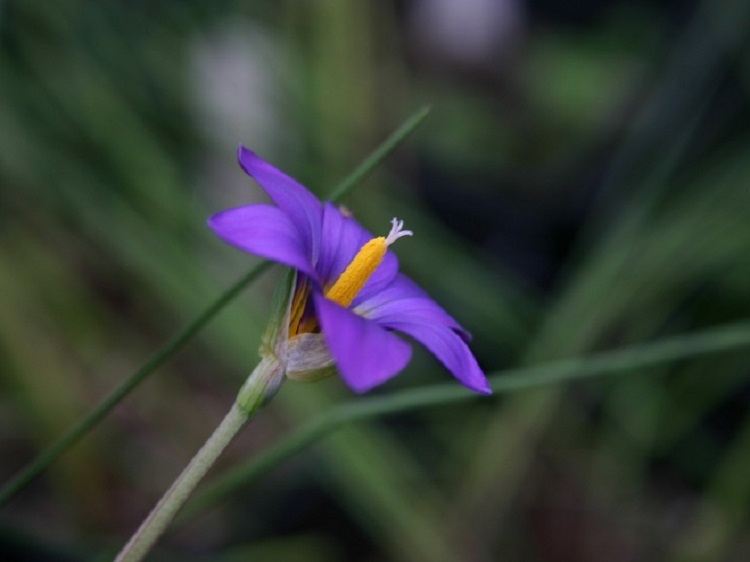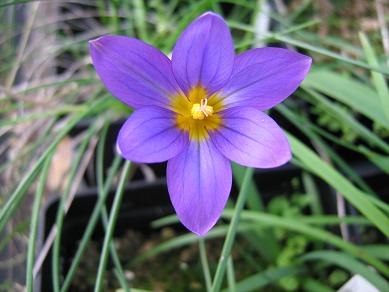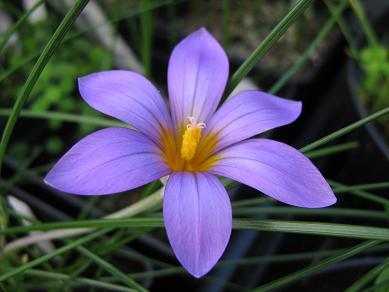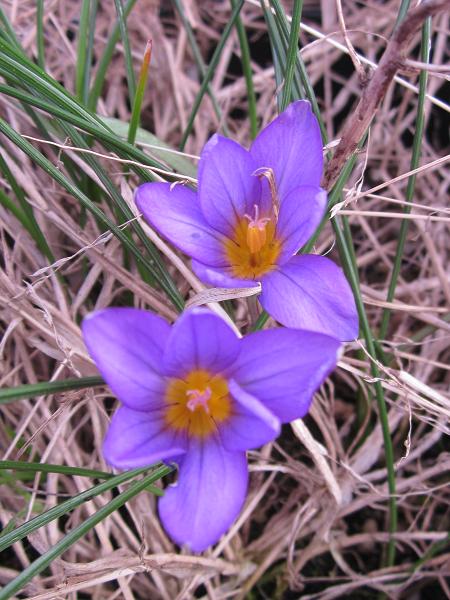 |
A species from the north Mediteranean coast. All the Romulea have a reputation for weediness, and it is probably deserved in some cases, but some of them have spectacular flowers,
which is a very adequate recompense.
I have grown a few from seed over the last few years and the chaos and confusion in the genus, punctuated with moments of silky petalled wonder are starting to attract me!
I have seen this form growing as a small alpine in cool dry conditions, but under cover here it has become long and leggy (but still wonderful)! Paul Christian says in his RarePlants catalogue: "A large-flowered, deeply-coloured violet species with a well contrasted yellow-orange throat. This is an excellent plant with fabulous colouring and large flowers with broad petals. Excellent in a pot and flowering well there, though it will grow outside with fewer flowers. Perhaps a local Spanish form (from the south east of that country) of the more widespread bulbocodium, but if so it is still the biggest and best form and horticulturally it is very distinct and desirable." The Pacific Bulb Society say: "Romulea clusiana (Lange) Nyman is the showiest species of Romulea in the Mediterranean. It has a large, sessile flower that is purple with a deep yellow throat. It is distributed in Spain, Portugal and coastal NE. Africa and flowers in February." Tony Hall, writing on Andaucia.com says: "Romulea clusiana is the showiest of all of the Romulea species found in the Mediterranean. It's commonly called the sand crocus because of its preference for growing in open sandy soils. Look for it growing en masse in coastal sands and dunes at the backs of beaches in the Cadiz province, especially he coasts of Algeciras and Tarifa. It produces a large showy inflorescence with 1-3 flowers growing from each corm. The flowers are 30-35 mm wide, quite variable in colour, purplish-pink or lilac, with darker veining on the tepals, a deep-yellow or orange throat and a whitish band above. The stamens are bright yellow and pubescent at their bases, white above. Leaves are all basal and very thin, around 2mm wide, but can be very long, 10-40cm. These are dark green, with a deep central groove, and are produced during flowering. Romulea clusiana was originally thought to be a variety of Romulea bulbocodium, which is a much commoner plan, with smaller flowers and shorter leaves. It also has a much wider range of habitats and is found in most provinces. Both species flower from January to March, but Romulea bulbocodium can go on a little longer, until April at higher altitudes." |
|
| 1st March 2009 | ||




